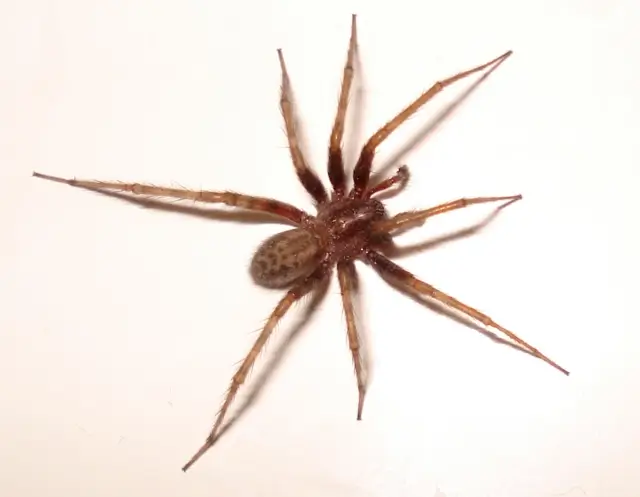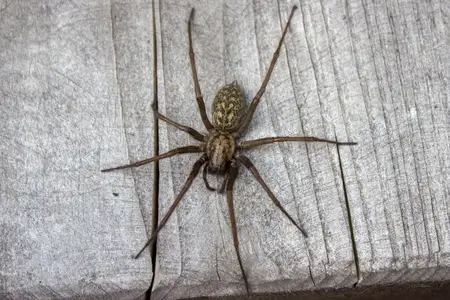
Identify and Control House Spiders
House spiders are among the most common pests that people encounter indoors. These small arachnids are known for their ability to adapt to living inside buildings, where they build their characteristic webs in corners, basements, attics, and other low-traffic areas.
Despite their name, these spiders don’t have to live in your house -- once you know what to look for, you can identify them quickly and kick them out just as fast. At A-1 Pest Control, our team of experts are always here to help you spot an infestation, eliminate it, and prevent house spiders from making themselves at home ever again.
Table of Contents
What Are House Spiders?
The term “house spider” generally refers to spiders that thrive in—you guessed it—houses. While there are many species of spiders in the world, only a handful have adapted specifically to living alongside people. These spiders use spider silk to build sticky webs that capture small insects and provide them with a steady food source.
House spiders are not a single species but a group of varieties that are commonly found in the United States and across North America. In fact, scientists have identified multiple types that tend to stay inside houses year-round, making them a familiar sight for homeowners.
Common House Spiders
Several types of common house spiders appear more frequently than others. These include:

- American house spider (Parasteatoda tepidariorum): Often found in basements, closets, and crawlspaces, recognized by their tangled webs.
- Cellar spiders: Sometimes called “daddy longlegs,” known for their long, thin legs and habit of hanging in corners.
- Domestic house spiders: Originally from Germany, this type has spread across the United States and much of North America
Each of these varieties thrives indoors, relying on spider silk and webs to survive in homes.
Understanding House Spiders
House spiders are a natural part of the ecosystem, even when they live in human homes.
While they can be unsettling to encounter, they are not generally harmful to humans. Their presence often highlights a larger insect issue, and learning about their behavior and types can make identifying them much easier. Whether they are building webs in corners or quietly hiding in basements, house spiders are among the most common arachnids in North America and the wider world.
What Attracts House Spiders?
House spiders usually enter homes in search of food and shelter. In the process of building their webs, they take advantage of small insects that are already present indoors. If you see more spiders around your house, it often indicates that there is a steady supply of other pests nearby.
Seasonal changes can also influence their behavior. During colder months, spiders may move indoors to escape harsh weather, while in the warmer seasons, open windows and doors can provide easy access to houses.
Food Supply
Spiders are predators, and their presence almost always points to another underlying issue: insects. A consistent population of flies, ants, moths, or other pests inside a home provides an easy food source. Spiders build webs where they know prey will pass by, often near windows, doors, or light fixtures where flying insects gather.
Shelter
Homes offer countless hiding spots where spiders can live undisturbed. Basements, attics, storage rooms, and even the space behind furniture provide the kind of quiet, low-traffic areas they prefer. These areas also allow spiders to construct stable webs without constant disruption, making them ideal habitats.
Moisture
Many spiders are drawn to damp environments. Bathrooms, basements, laundry rooms, and crawlspaces provide the humidity some species need to thrive. Moisture not only attracts spiders directly but also draws in the insects they prey on, creating a double incentive for spiders to settle in.
Why Are House Spiders Common Indoors?
There are a few reasons these spiders have become so common in the home:
- They have adapted over centuries to live near humans.
- Houses provide a stable environment with fewer predators than outdoors
- The varieties most often found indoors rarely survive long outside, which is why they remain inside once they settle.

This adaptation process makes them some of the most common house pests in North America.
Frequently Asked Questions About House Spiders
Do house spiders bite?
Yes, they can bite if trapped against the skin, but bites are rare and typically cause only mild irritation.
What does it mean when I see many spiders in my home?
It usually indicates a plentiful food source such as flies, ants, or other insects, not a sign of poor hygiene.
Can house spiders survive outside?
Most common house varieties are poorly adapted for outdoor survival and thrive best inside homes.
Are House Spiders Harmful?
For the most part, house spiders are not dangerous to humans. While they are capable of biting if provoked, their venom is rarely harmful. Most species in the United States that live indoors are considered harmless and even helpful since they reduce insect populations.
Where Are House Spiders Found?
House spiders can be found throughout North America, from Canada down to Mexico, and across much of the United States.
Their range includes both urban and rural homes, with certain species, such as the domestic house spider from Germany, spreading widely due to global trade and travel.

